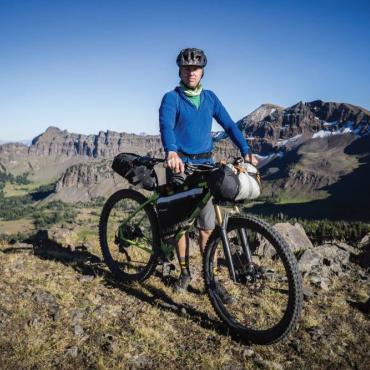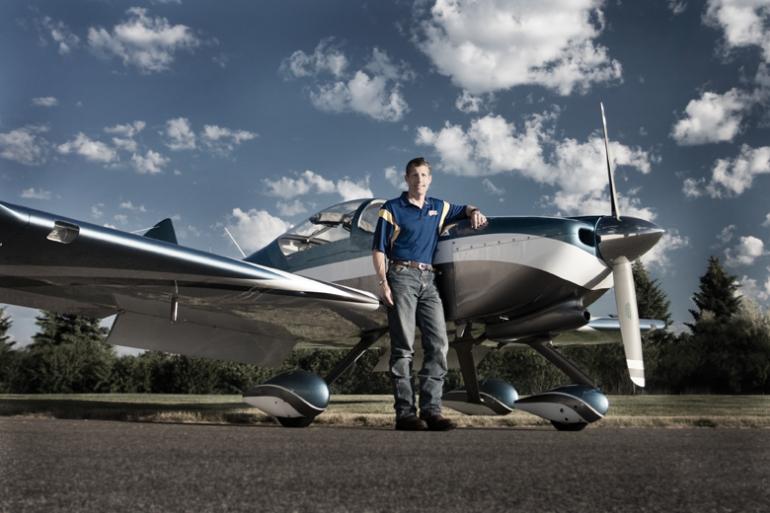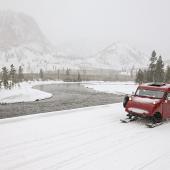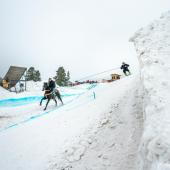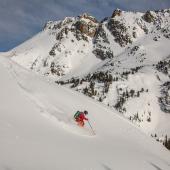Up in the Air
Our plane floats off the runway in what seems a distance far too short. I’ve flown enough to know this is how flying was meant to be—light and fast—which is much more enjoyable than cramming into a tube with a few hundred strangers and jetting up into the death zone. We gain elevation quickly and look out over the valley. Far below, the Bridgers are a vein and the city of Bozeman a piece of graph paper.
The pilot, Kurt Klewin, has logged over 10,000 hours in the past 27 years flying commercially for Continental and Southwest Airlines. Today, he’s arranged to take me on a tour of the course he’ll fly during next week’s Big Sky Air Race. Three of Kurt’s competitors are his co-workers at Southwest Airlines, and the rest are a mix of commercial and private pilots ranging from 20 to 65 years old. “It’s fun to see them out there,” Klewin says. “There’s a lot of friendly ribbing going on.”
We’re cruising along in a home-built RV-6A, which Klewin put together a piece at a time over the course of five years. It has over 11,000 individual rivets. Having it qualify under the “experimental” class of aircraft seems funny, because this thing is no science-fair entry—it’s a proven high-performance aircraft. Each year, the plane is inspected piece by piece according to an annual checklist created by the manufacturer. After the FAA deems the plane flight-worthy, it issues Klewin an FAA repairman’s certificate.
As we pull up and over Bozeman, Klewin makes a right turn and we head out toward Three Forks. It’s a summer morning, and the early light reflects off the headwaters far below us. The braided waters shine brightly as southwest Montana begins to wake up and start the day.
The key to winning the Big Sky Air Race is knowing the course, not showing off with upside-down turns and death-defying g-force tricks. Before the race, each entrant gets a map of the course and a photo of each turn to study. It helps to fly the course beforehand, because pilots locate the turn points by GPS and sight. Knowing the instruments is important, but when you’re flying almost 200 miles an hour at 500 feet above the ground, it’s better for timing purposes to visualize the turn geographically. Turning at the correct elevation is also key. “It’s important to know when and where to fly low or high based on winds aloft,” Klewin explains. “You need to be able to pick a good line to minimize turn distance without cutting the corner.”
Part of the Sport Air Racing League (SARL), the race covers 125 nautical miles and has 11 different turn points—starting and ending in Three Forks. The average speed on race day is 191 miles an hour, so for the sake of enjoyment and safety, each of the 26 planes flies one at a time. That’s a lot of planes, but even more show up for the fly-in as well. Organized by Cody Folkvord of Headwaters Flying Service in Three Forks, the event also offers food, music, and all kinds of fun.
At one point during our flight, Kurt asks if I’d like to drive for a bit. I oblige and Kurt give me control of the joystick. He still works the pedals and every other aspect of our flight, but for a brief moment in time, I swing the plane left to right and up and down. The motions are smooth. Uninhibited, the plane moves freely as we carry on into the morning—floating above the rest of the world.
This year’s Big Sky Air Race is on July 7 in Three Forks. For more information, visit bigskyairrace.com.


